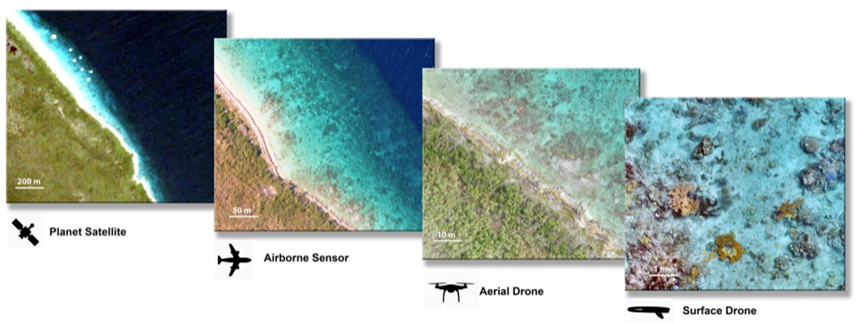Mapping at Other Scales
The complexity of managing coral reefs often comes down to an issue of scale.
Conservation strategies and management plans are tailored to the spatial extent of the area of concern, from regional initiatives to local projects. The information to support these efforts has to be at the same scale across the area of study.
The first and most basic question for coral reef management, at any scale is “Where are the reefs?”, followed by “What area does it cover?” and “How much of it is protected?”. However, many management issues require more detailed information, such as live coral cover, complexity of reef structure, or the biodiversity of the reef. In order to obtain this information, remote sensing tools with the capacity to record the unique signal of live coral cover and with a spatial resolution high enough to be able to capture individual coral colonies are needed.

Different resolutions of the reef at Isla Catalina, Dominican Republic. From left to right: Planet satellite imagery with a 3.7 m resolution; airborne sensors with a 1 m resolution; aerial drone with a 4 cm resolution; surface drone with a 10 mm resolution. Only at the last resolution can we start distinguishing single coral colonies. Credit: The Nature Conservancy
The mapping tools presented here are the topic of Lesson 2: Using the Allen Coral Atlas and Lesson 3: Multi-Scale Mapping of Coral Reefs in the Caribbean of the online course Remote Sensing and Mapping for Coral Reef Conservation.
